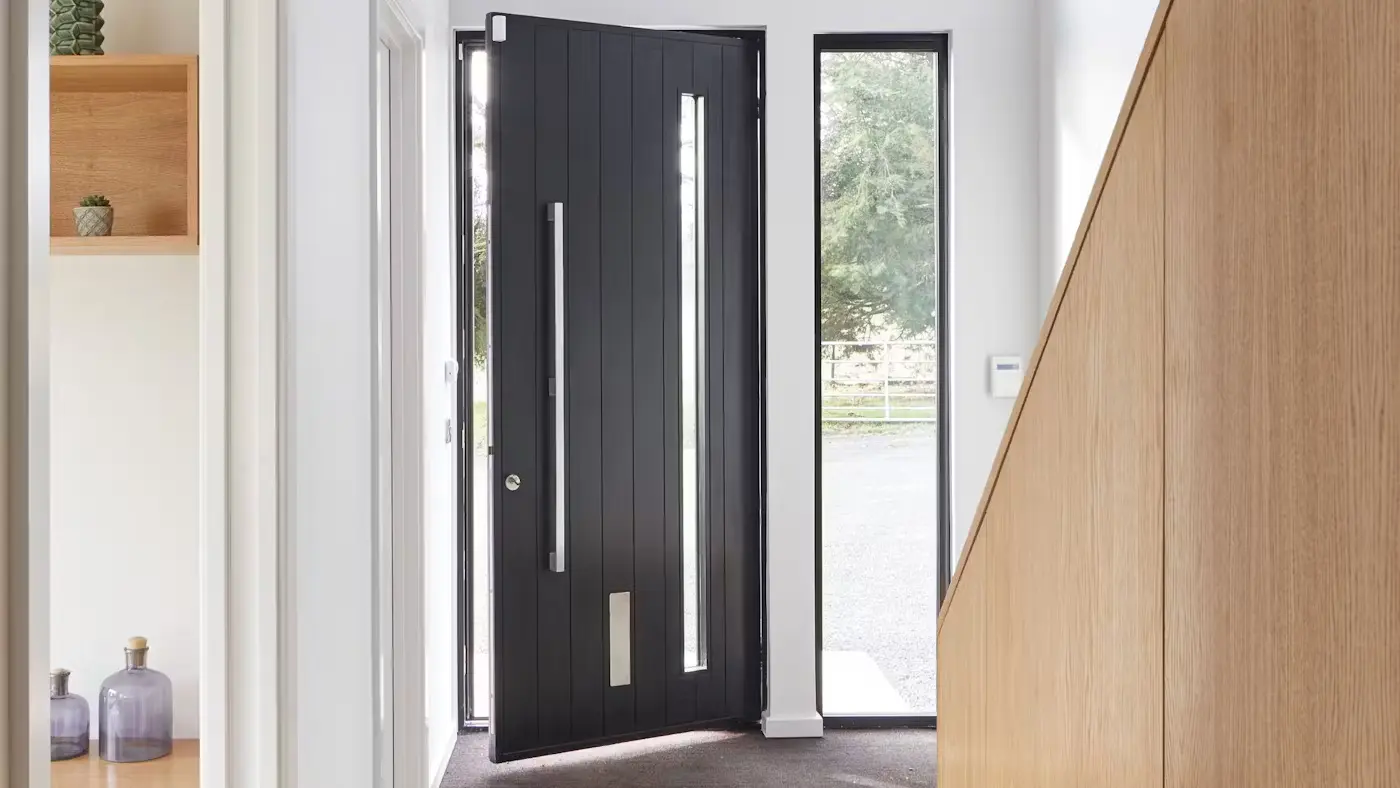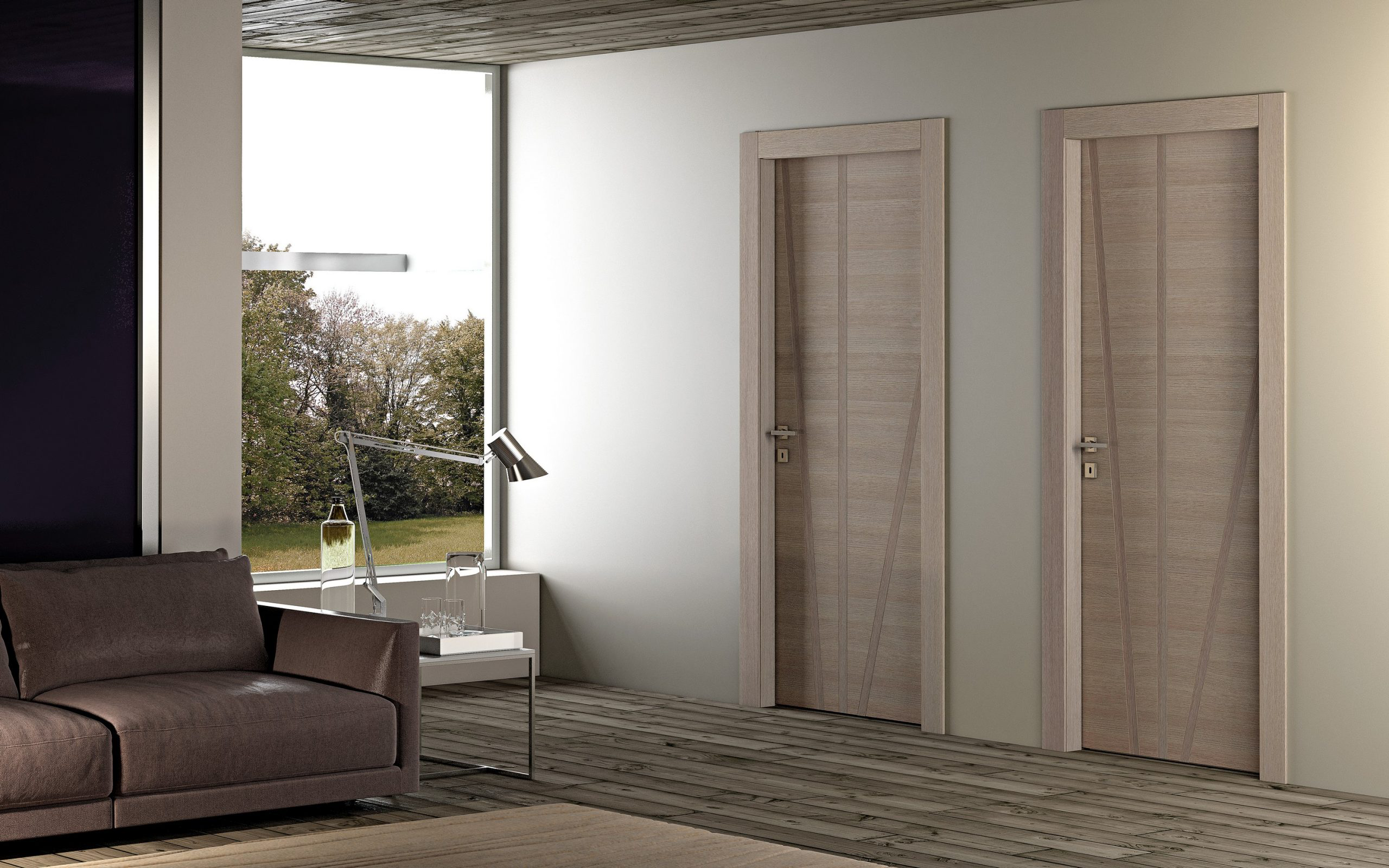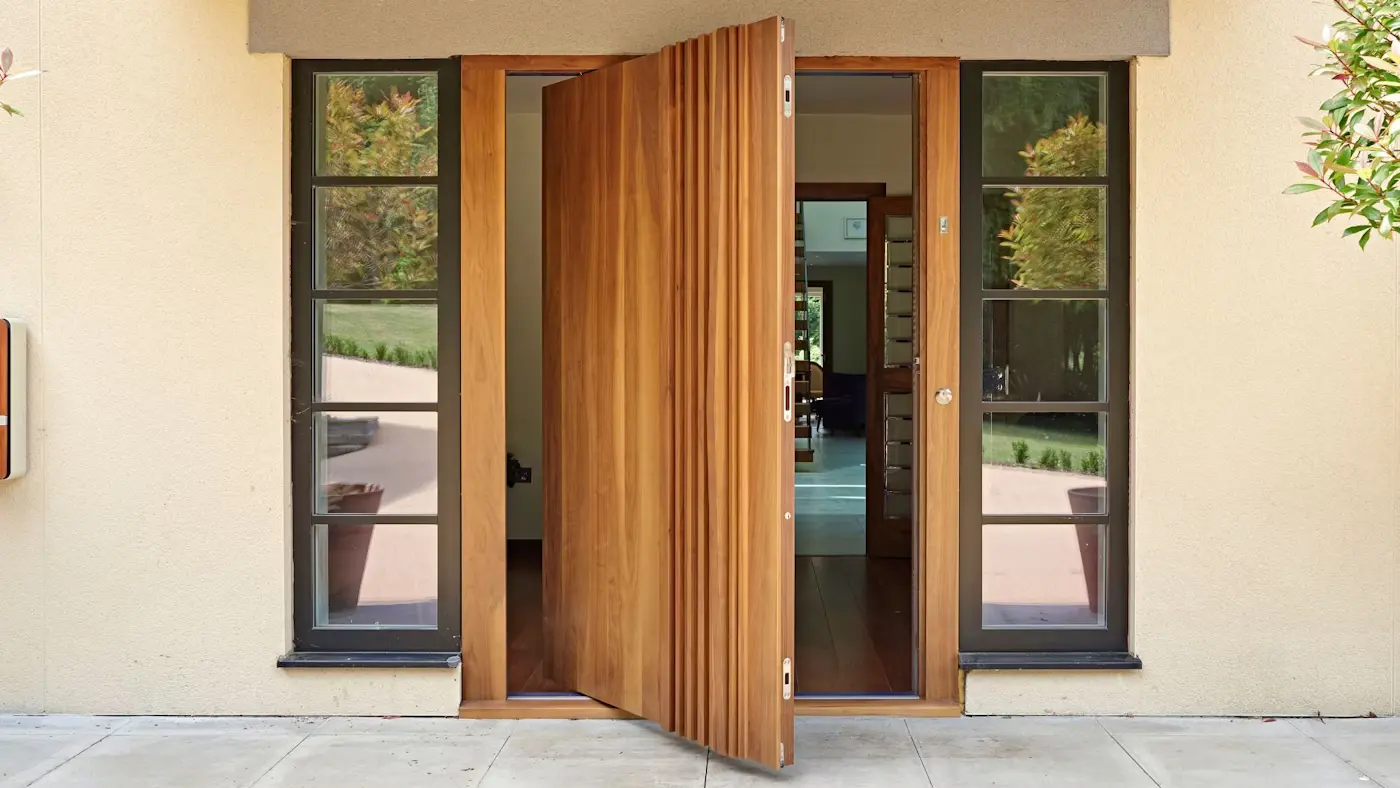What is a garage door actually called?
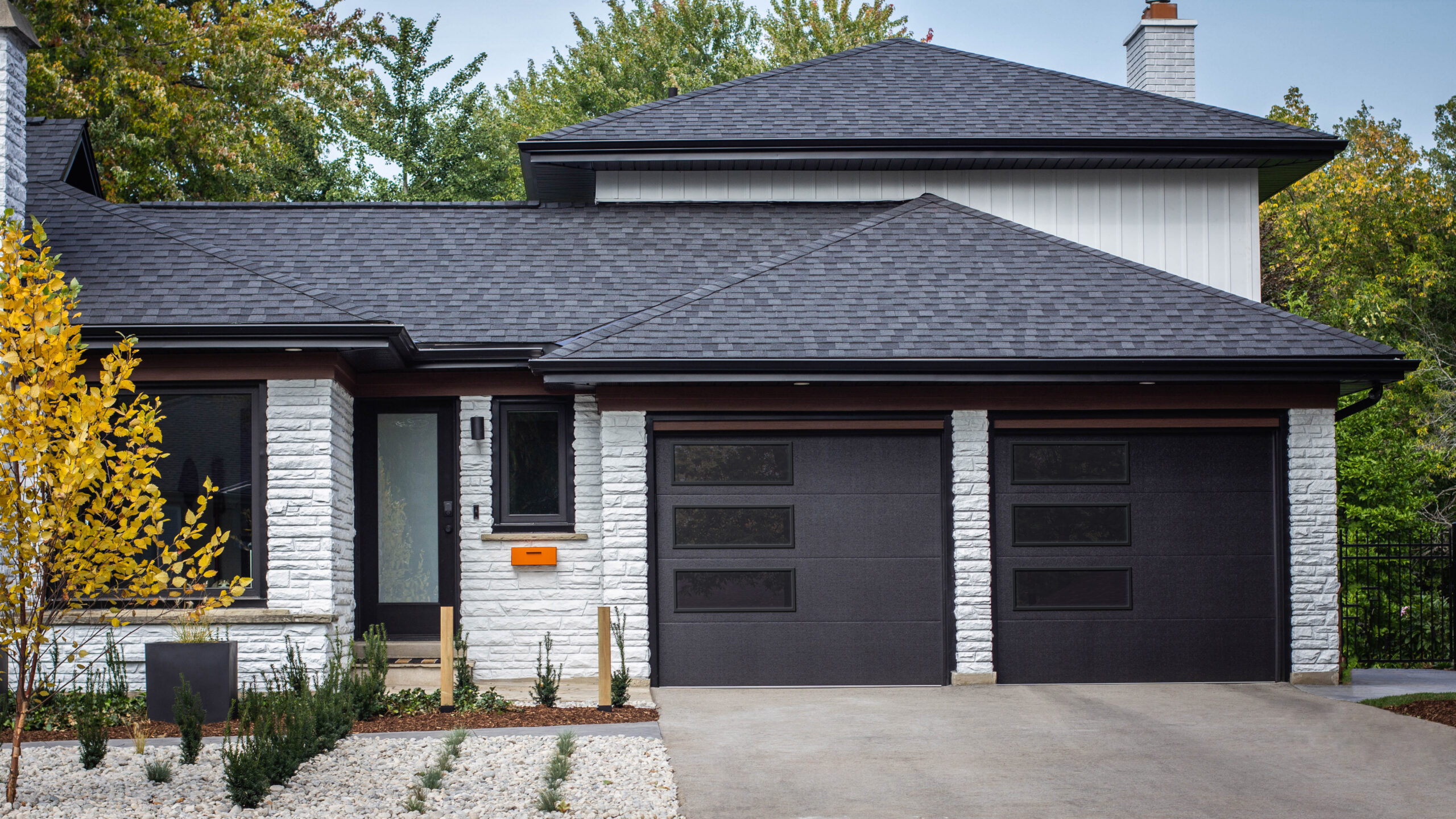
Understanding the Basic Concept of a Garage Door
What is a Garage Door?
Garage doors are an essential part of any home or business that has a garage. It’s the large movable barrier that covers the entrance to a garage, protecting vehicles, tools, and other valuable items inside. Simply put, it’s the door that allows access to your garage space, often designed for security, functionality, and aesthetics.
Garage doors come in many forms, and they can be manual or automatic. An automatic garage door is powered by a motor, allowing it to open and close with ease, usually with the help of a remote control or a wall-mounted button. On the other hand, manual garage doors require physical effort to open and close, often using a handle or pulley system.
Most modern overhead garage doors are designed to roll up or slide up along tracks, making them space-efficient. They are typically made from durable materials like steel, aluminum, or wood, and can be insulated for better energy efficiency. You’ll also find carriage-style garage doors that add a vintage touch or modern sectional garage doors with sleek, clean lines.
Understanding what a garage door is will help you make a more informed decision when it comes to selecting the right type for your home or business.
Why is it Important to Choose the Right Garage Door?
Choosing the right garage door goes beyond just aesthetics; it impacts your daily convenience, home security, and even energy efficiency. A well-chosen garage door can last for many years and provide easy access to your garage, while a poorly chosen one can lead to frequent repairs, higher energy bills, and even safety concerns.
Security is one of the top reasons why you need to pick the right garage door. A sturdy, reliable automatic garage door with a secure locking system can help keep your vehicles and possessions safe from theft. Modern garage doors come with advanced security features, such as rolling-code technology, which changes the code every time the door is used, making it much harder for thieves to gain access.
Also, the insulation of a garage door can greatly affect the energy efficiency of your home. Live in a climate with extreme temperatures. An insulated garage door will help maintain a comfortable temperature inside the garage, preventing heat loss during winter or keeping the heat out during summer. This can even reduce your overall energy bills.
Another thing to consider is the style of the garage door. Whether you’re opting for a traditional garage door with raised panels or a more modern garage door with sleek lines, the door you choose should match the architectural style of your home. A well-chosen door not only complements your home’s look but can also add curb appeal and even increase property value.
Finally, maintenance is an important factor. Some garage doors require more frequent care than others. For example, wooden garage doors need to be refinished regularly to avoid rotting, while steel garage doors generally need less maintenance. The right door can save you time and money on repairs in the long run.
The Different Types of Garage Door
Choosing the right type of garage door is crucial for both function and appearance. There are several styles to choose from, each offering unique features and benefits. Below, we’ll break down the most common types of garage doors: overhead doors, sectional doors, roll-up doors, and slide-to-side doors.
Overhead Doors
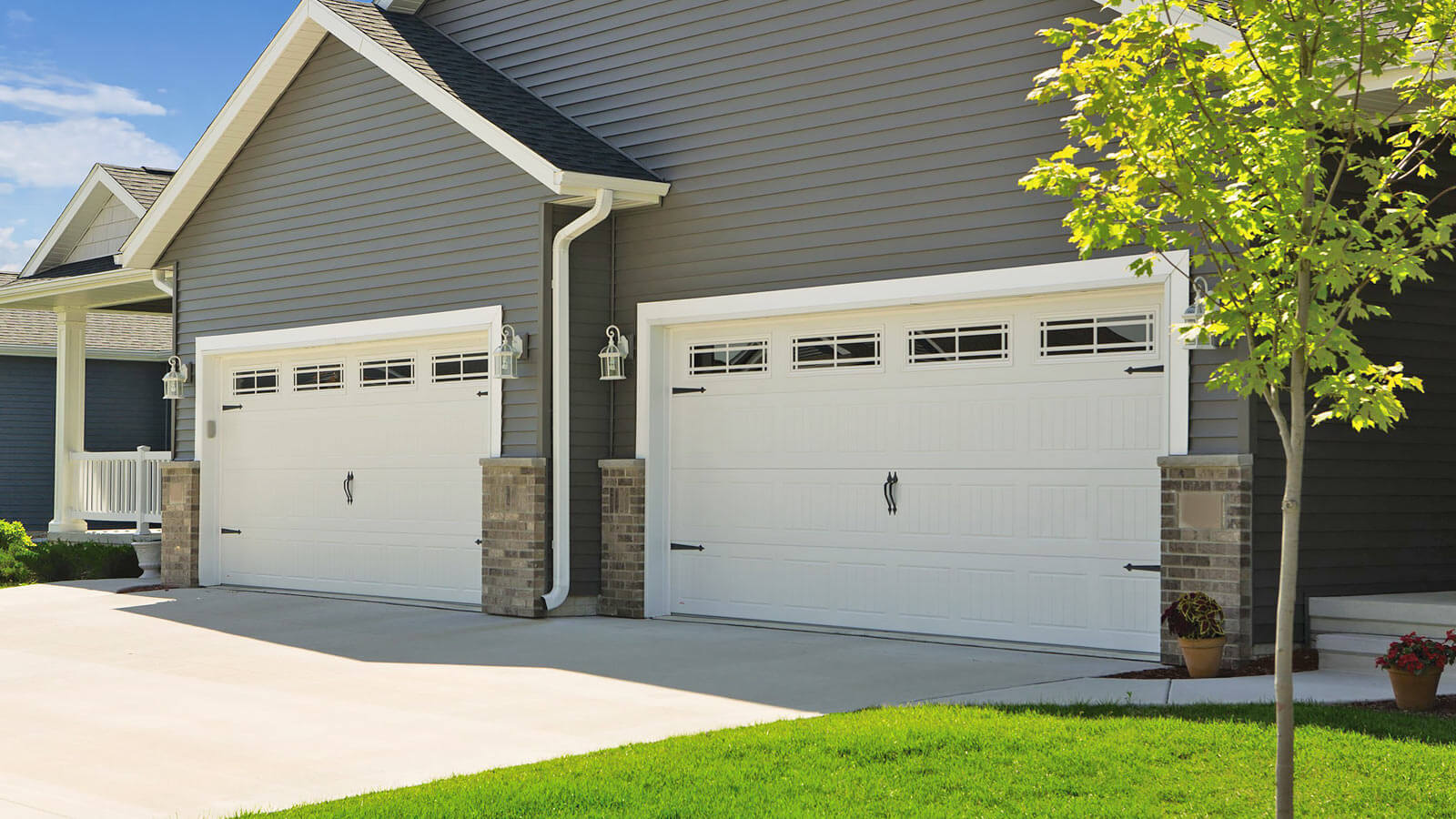
Overhead garage doors are one of the most popular choices for homes and businesses. As the name suggests, these doors open vertically and slide up overhead, usually along tracks. They’re typically made from materials like steel, aluminum, or wood and are designed to fit tightly against the ceiling when open, making them ideal for spaces with limited headroom.
One of the biggest benefits of overhead doors is their space efficiency. Since the door moves upward, you don’t lose any floor space inside the garage, which is especially important for smaller garages. These doors also tend to be more durable, providing strong protection against the elements and security threats.
Overhead garage doors can be manual or automatic, with the latter often powered by a motor and operated via remote control. Many modern versions come with insulation, making them more energy-efficient, and they offer a sleek, clean design that matches a wide variety of home styles.
Sectional Doors
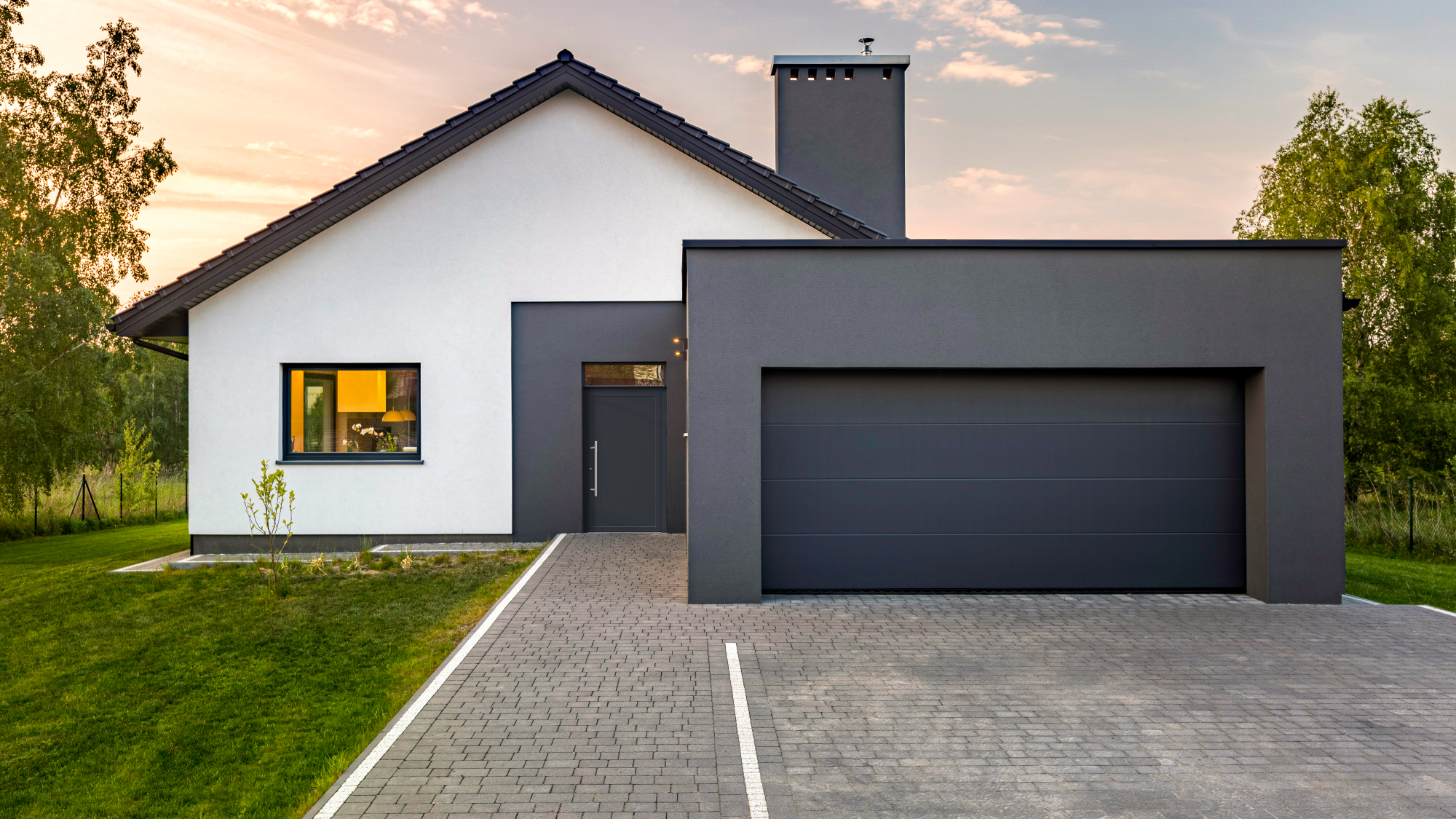
Sectional garage doors are similar to overhead doors but are made up of several horizontal panels that move along tracks. Each panel is hinged to the next, allowing them to fold up as the door opens. This type of door is very popular due to its smooth operation and variety of design options.
One of the key advantages of sectional doors is their durability. The individual panels can be easily repaired or replaced if damaged, making maintenance more cost-effective. Plus, many sectional doors offer better insulation compared to traditional overhead doors, keeping your garage cooler in summer and warmer in winter.
These doors also come in various materials, such as steel, aluminum, and fiberglass, which can be chosen based on factors like climate, security needs, and aesthetic preferences. Sectional garage doors are especially great for homes with limited ceiling space, as they don’t require extra room above the door for movement.
Roll-up Doors
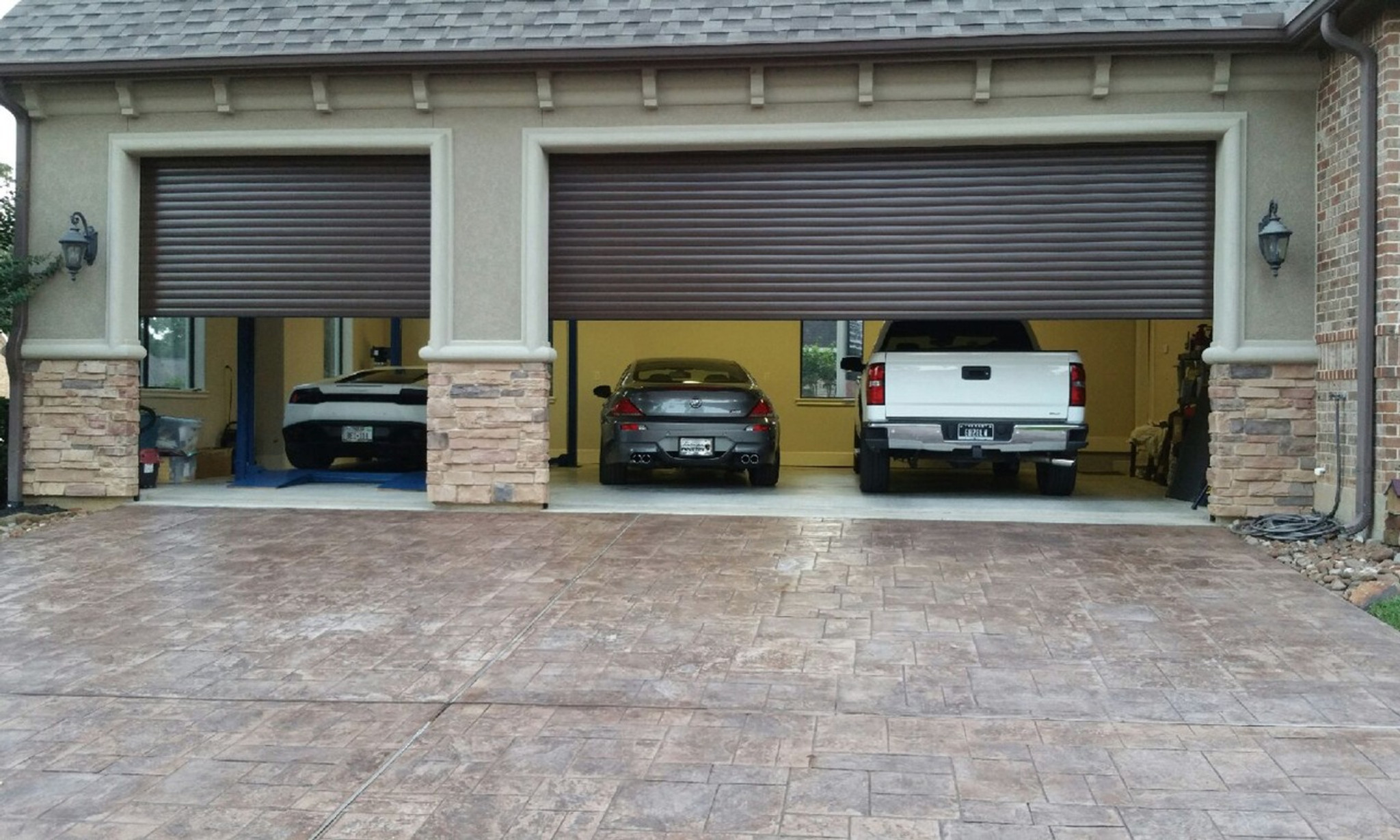
Roll-up garage doors are similar to overhead doors, but instead of folding up, they roll into a coil above the opening. These doors are often seen in commercial settings, but they’re also available for residential garages. Roll-up doors are incredibly compact, which makes them perfect for areas with very limited headroom.
One of the benefits of roll-up doors is their ability to withstand high-frequency use. They are often made from heavy-duty steel or aluminum, which adds to their strength and security. Because they roll into a coil, they save space and don’t require a lot of clearance, making them great for smaller garages or homes with low ceilings.
Another advantage is that roll-up doors are typically easier to maintain since they have fewer moving parts compared to other styles like sectional doors. This simplicity often leads to a longer lifespan and fewer repair needs over time.
Slide-to-Side Doors
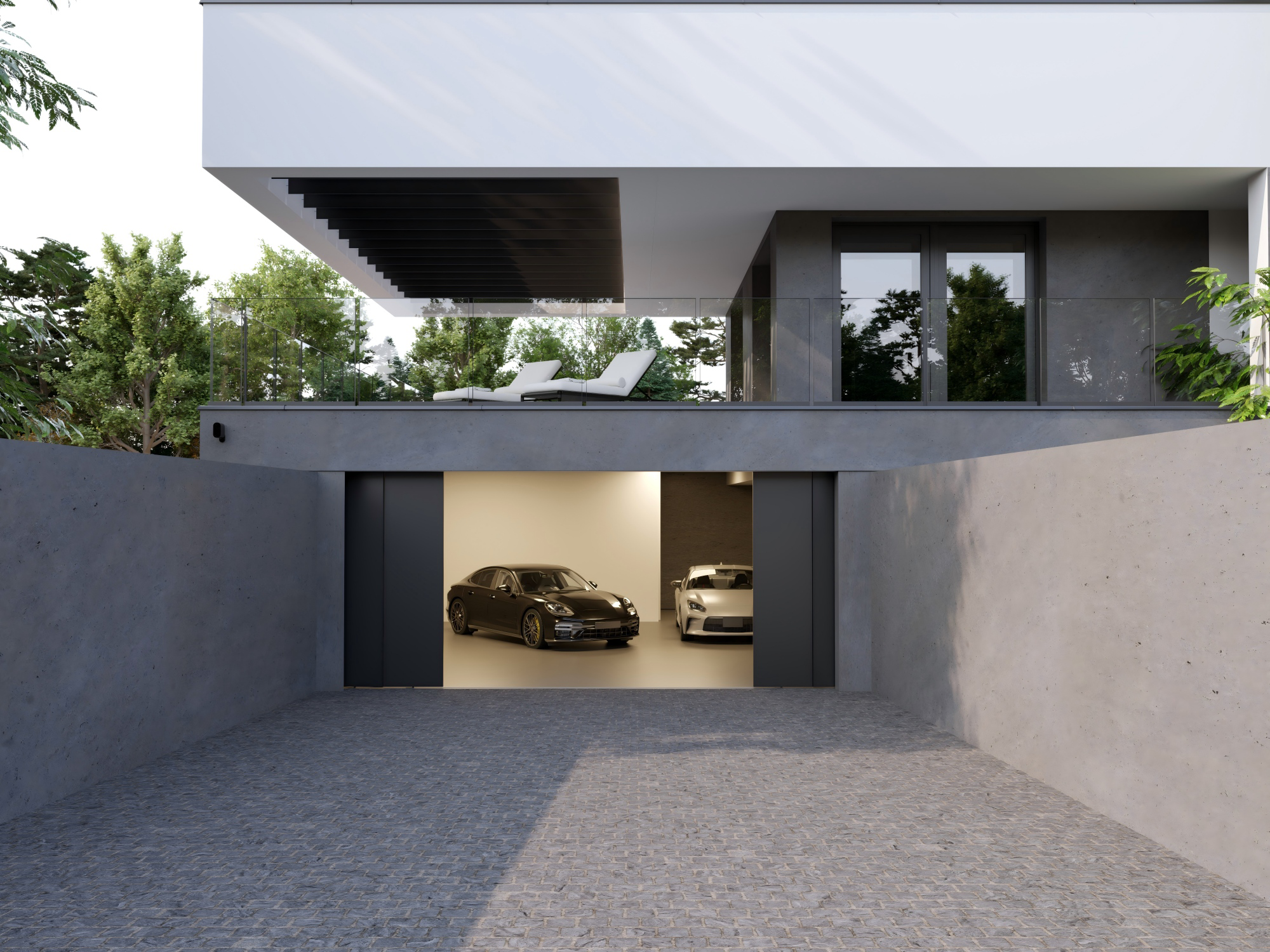
Slide-to-side garage doors are a less common but highly practical option. As the name suggests, these doors slide horizontally along a track instead of moving up or rolling. Slide-to-side doors are a great option if your garage has low ceilings or if you prefer a door that doesn’t take up overhead space.
These doors are often used in more modern or minimalist designs. They work well in smaller garages where overhead space is needed for other uses, like storage or a work area. While not as common as other types, slide-to-side doors offer a unique, streamlined look that fits well with contemporary homes.
One thing to keep in mind is that slide-to-side doors generally require more space outside the garage to operate fully. Therefore, they may not be ideal for homes with limited space around the garage entrance.
Common Names for Garage Door
Garage doors are more than just an entryway to your garage—they also come with a variety of names and terms, depending on where you live or who you’re talking to. Understanding the different terminologies used for garage doors can help you make better decisions when shopping for one or speaking to a professional. Let’s dive into some of the most common names and terms that might pop up in the world of garage doors.
Different Terminologies Used for Garage Door
When it comes to garage doors, different terms are used in different situations. For example, while the most common term is “garage door,” you might also hear these alternative terms depending on context.
1. Overhead Doors:
This term is often used interchangeably with garage doors, especially when referring to those that open upward along a track system. It’s a broader term that refers to the way the door operates—by moving overhead rather than swinging out or sliding sideways. This term is especially common in commercial settings.
2. Roll-up Doors:
While many refer to these as just garage doors, some people specifically call them “roll-up doors” because of the way the door rolls into a coil. These doors are often found in areas with limited ceiling space or in commercial applications.
3. Carriage Doors:
Flush doors are very practical. They’re easy to maintain, and their simple design works well with a wide variety of interior styles. The term “flush door” is commonly used when you want to emphasize the smooth, even finish and the seamless appearance of the door.
4. Sectional Doors:
When talking about sectional garage doors, people might use this term to refer to doors made up of several panels. The term “sectional doors” highlights the construction style where individual sections are hinged together, allowing the door to move up smoothly when opened.
5. Roller Shutter Doors:
In some areas, garage doors are also called “roller shutter doors,” particularly in European countries. This term focuses on the shutter-like design, which rolls up into a coil above the garage entrance.
Synonyms for Garage Doors in the Industry
In the garage door industry, certain synonyms are often used to describe different types of doors. These can refer to the type, material, or mechanism of the door. Here are some commonly used synonyms:
1. Automatic Garage Door:
This term is often used to describe a garage door that opens and closes automatically, usually with a motor and remote control. This is common in residential homes where convenience and security are priorities.
2. Electric Garage Door:
Similar to the term “automatic garage door,” this phrase is often used to emphasize the powered mechanism. It’s commonly used when referring to garage doors that are controlled electronically, either with a remote or smart technology.
3. Overhead Door:
This is another synonym that often pops up in both residential and commercial contexts. It refers to garage doors that open upwards, making them a space-saving option for garages with limited space.
4. Roll-up Door:
As mentioned earlier, roll-up garage doors refer to a specific type of door that coils up into a drum above the garage opening. These are often used in commercial spaces but are also becoming more popular in residential homes with limited space.
5. Tilt-Up Door:
A tilt-up garage door is an older style where the door tilts outward to open. This design is less common today, as overhead doors and sectional doors have become more popular, but it’s still a valid synonym for older garage doors.
6. Manual Garage Door:
While most modern garage doors are automatic, manual garage doors are still available, especially in older homes or for people who prefer the simplicity of operating the door by hand. These are usually operated with a chain, pulley, or lever system.
7. Insulated Garage Door:
When the garage door is designed with insulation to help control temperature, it’s often referred to as an “insulated garage door.” These doors are great for homes in extreme climates or for people who want to keep their garage more energy-efficient.
8. Residential Garage Door:
This term is used to distinguish garage doors that are designed for homes as opposed to those meant for commercial or industrial settings. It typically refers to smaller, aesthetically designed garage doors.
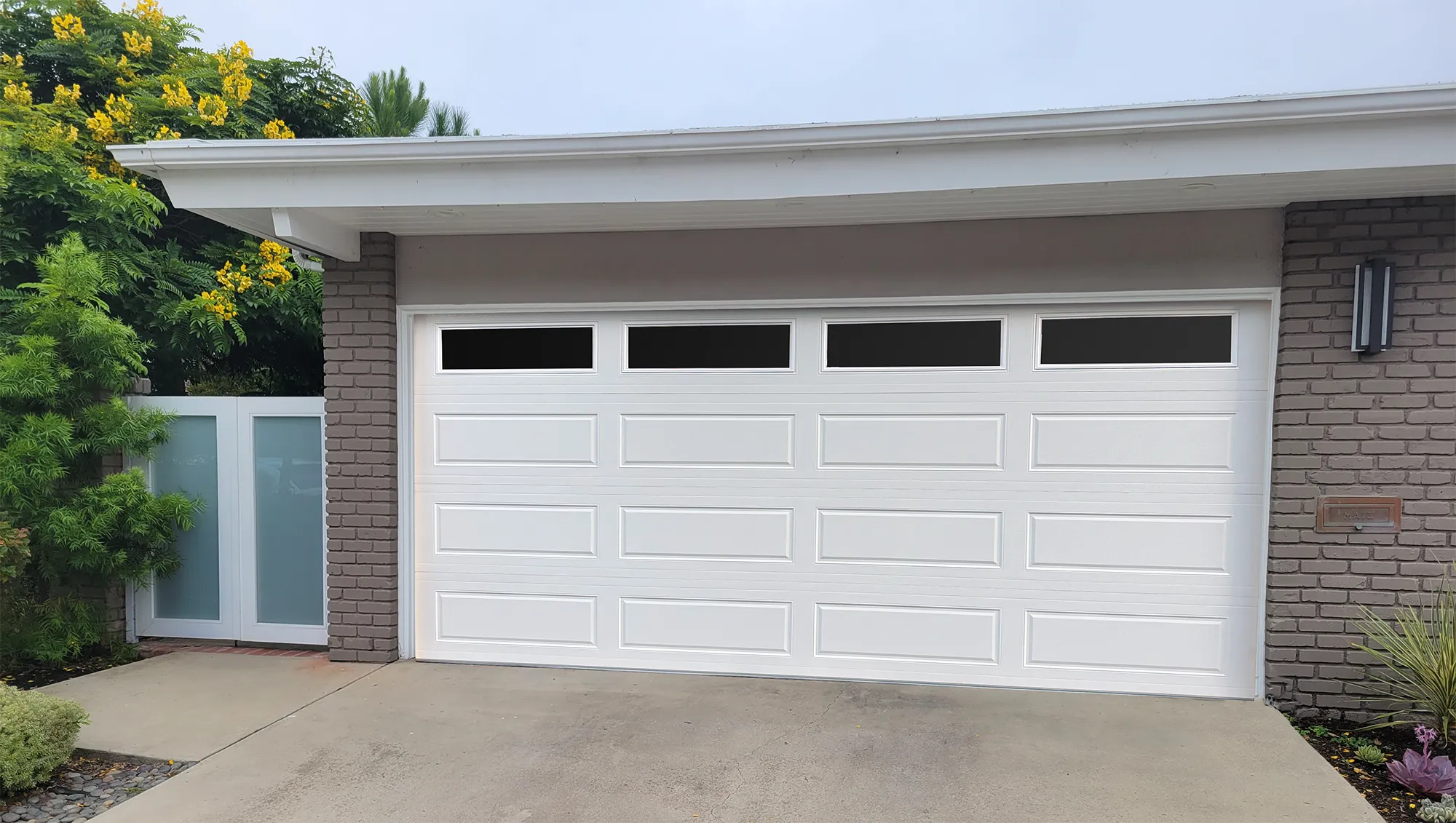
What are the Parts of a Garage Door Called?
A garage door system is made up of several key parts that work together to ensure smooth operation. Understanding these parts can help you better maintain your garage door and troubleshoot any issues that might arise. Below, we’ll break down the essential components of a typical garage door system.
Key Components of a Garage Door System
Tracks, Springs, and Cables
Tracks:
The tracks are the metal rails that guide your garage door as it opens and closes. They are mounted on either side of the door and allow it to move smoothly along the path. Over time, garage door tracks can become misaligned or dirty, which can cause the door to jam or move unevenly. Regular maintenance is key to ensuring they stay in good condition.
Springs:
Garage door springs are responsible for the door’s movement and balance. They provide the force needed to open and close the door. There are two types: torsion springs and extension springs. Torsion springs are usually mounted above the door, while extension springs run along the sides. These springs store energy when the door is closed and release it to help the door open smoothly. If the springs break, your garage door may become impossible to open, so it’s important to check them regularly.
Cables:
The cables work in tandem with the springs to lift and lower the garage door. They are attached to the bottom of the door and run through pulleys, helping distribute the weight evenly. Garage door cables can wear out over time and may snap under too much tension. If you notice the door struggling to open or close, the cables might be the issue.
Garage Door Opener and Remote
Garage Door Opener:
The garage door opener is the motorized device that powers the garage door to open and close automatically. It is mounted on the ceiling, usually above the center of the door. The opener is connected to the garage door via a chain, belt, or screw drive system, which allows the door to move. Modern garage door openers come with features like Wi-Fi connectivity, allowing you to open or close your door remotely via smartphone apps.
Remote Control:
The remote control allows you to operate your garage door from a distance, typically from within your vehicle. This device communicates with the garage door opener to send signals for opening or closing the door. Most modern garage door openers have rolling-code technology, which changes the security code each time you use it to prevent unauthorized access.
Wall-mounted Button:
In addition to the remote, many people also have a wall-mounted button or keypad inside the garage to operate the door. This can be useful for people who don’t want to rely on a remote control and prefer a more traditional method of operation.
Insulation and Weather Seals
Insulation:
Insulated garage doors are made with materials that help regulate the temperature inside the garage, preventing heat loss in winter and keeping the space cooler in summer. The insulation is usually placed between the door panels and can be made from foam, fiberglass, or other materials. Insulation is particularly beneficial if you have an attached garage, as it helps to maintain a more consistent temperature in your home.
Weather Seals:
Weather seals are strips of rubber or vinyl that run along the edges of the garage door. These seals help prevent drafts, dust, and rain from entering the garage. They also keep pests out and contribute to overall insulation. Over time, weather seals can become cracked or worn, so it’s important to replace them to maintain your garage’s energy efficiency.
How Each Part Contributes to the Door’s Function?
The Role of the Spring System
The spring system is one of the most critical components of your garage door. It works by balancing the weight of the door, allowing it to open and close with minimal effort. Without the spring system, your garage door would be far too heavy to operate, whether manually or automatically.
There are two main types of springs used in garage doors: torsion springs and extension springs. Both types serve the same purpose, but they work differently.
- Torsion springs are typically installed above the garage door and are wound tightly. When the door is closed, the springs store energy. As the door opens, the springs release this energy, helping the door rise smoothly and evenly. These springs are more common in residential garage doors because they offer more control and are less likely to break under pressure.
- Extension springs run along the sides of the door and stretch as the door opens, helping to lift the door. They are often found in older or less expensive garage doors and can be more dangerous if they break because they tend to release their energy abruptly.
How the Tracks Guide the Door?
The tracks are another essential part of your garage door system. These metal rails guide the garage door as it moves up and down, ensuring it stays on course. Without properly aligned and functioning tracks, the garage door can become stuck, misaligned, or even off-track, leading to potential damage or safety risks.
The tracks are typically mounted along the sides of the garage door opening and are designed to allow the door to travel smoothly as it opens. When the garage door moves upward, it follows the path set by the tracks, which helps to prevent any wobbling or uneven movement. The rollers attached to the door panels glide along the tracks, reducing friction and ensuring a smoother operation.
Proper maintenance of the tracks is important. Over time, dirt, debris, or rust can build up, making it harder for the door to move. Cleaning the tracks regularly can help prevent these issues. Additionally, it’s important to check that the tracks are properly aligned. If they become bent or misaligned, the door may not open or close correctly, and it could cause strain on the other parts of the garage door system, like the springs.
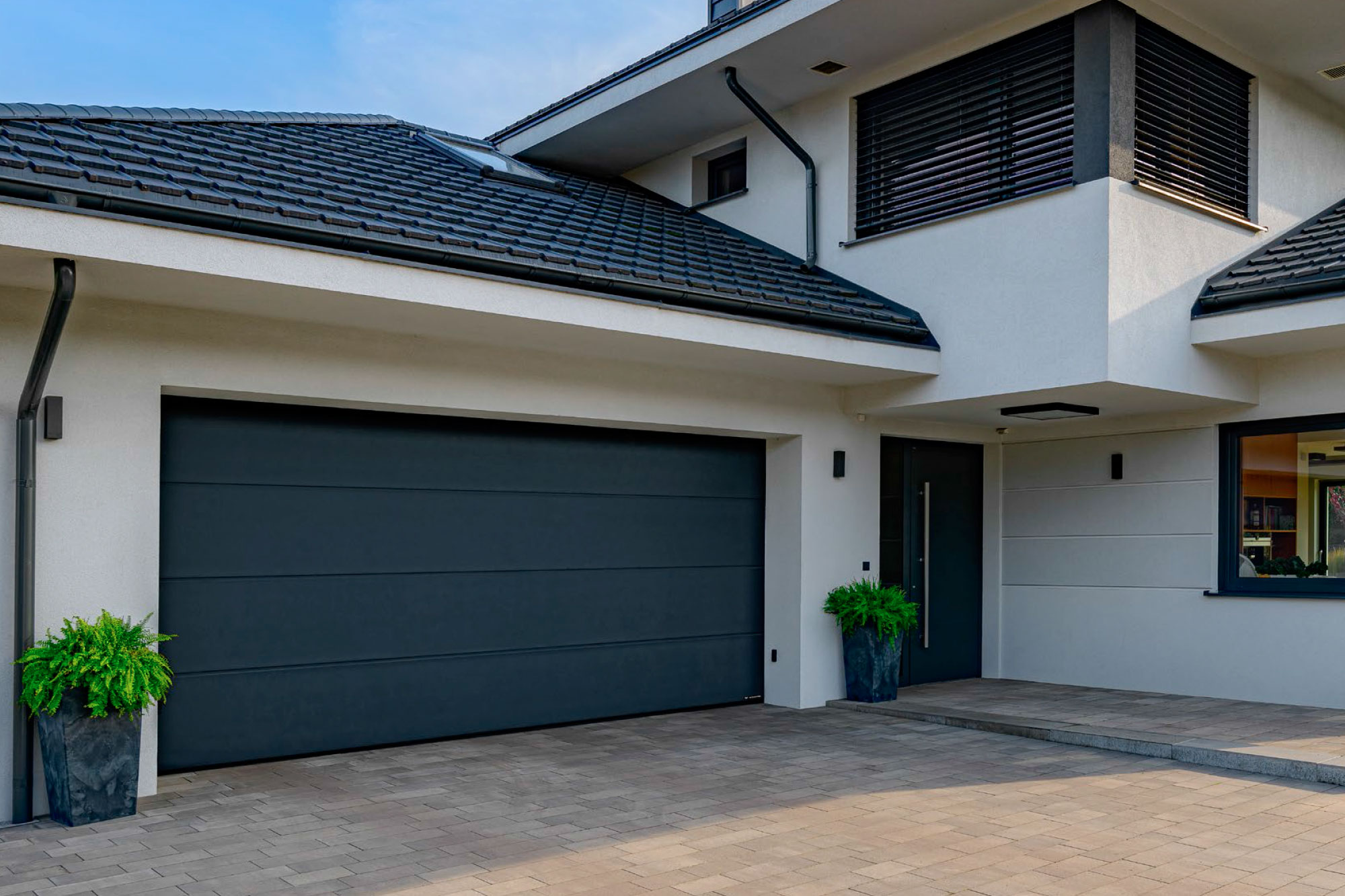
Garage Door Mechanism: How Does It Work?
Understanding how your garage door works can make a big difference when it comes to troubleshooting or maintaining it. The mechanism behind a garage door may seem complex, but it can be broken down into two main types: manual and automatic. Let’s dive into the differences between them and explore how each system operates.
Manual vs. Automatic Garage Doors
Understanding the Basic Mechanism of Manual Garage Door
A manual garage door is the simplest type of garage door system. As the name suggests, it requires physical effort to open and close. These doors usually operate with a pulley system or torsion springs that help reduce the force required to lift the door.
The basic mechanism of a manual garage door relies on a set of springs that store energy when the door is closed. To open the door, the user pulls on a handle or rope attached to the door. The springs help by releasing the stored energy, making it easier to lift the door. This type of garage door is generally lighter than automatic doors. Still, it requires manual effort to move, which can be inconvenient, especially when you’re carrying groceries or in a rush.
Another feature of manual garage doors is that they tend to have fewer moving parts, which makes them less likely to break down. However, the lack of automation can be a downside for people who want the convenience of a remote-controlled door.
How Automatic Doors Function with Sensors and Motor?
Automatic garage doors are the most common type today, especially in homes where convenience is key. These doors rely on a motor to open and close automatically, typically with the push of a button on a remote control or a wall-mounted switch.
The basic mechanism of an automatic garage door involves several key components working together. First, a motor powers the door’s movement. This motor is connected to a drive system—usually a chain, belt, or screw drive—that moves the door along its tracks. The motor uses sensors to detect when the door is fully open or closed, preventing it from moving further and causing damage.
In addition to the motor, automatic garage doors have safety sensors, which are often placed near the bottom of the door frame. These sensors detect obstacles or objects in the way of the door, such as a car or a person, and prevent the door from closing if an obstacle is detected. This is an important safety feature, especially if you have small children or pets around.
Some automatic garage doors also have smart technology, allowing you to control them with your smartphone. This added convenience can make it even easier to open or close the door from a distance, especially if you’re approaching the garage with your hands full.
Overall, the automatic garage door mechanism provides a seamless, easy-to-use experience. It saves time and effort, and it can be equipped with additional safety and convenience features like motion sensors, remote controls, and smart devices.
Why Choose an Automatic Garage Door?
Convenience
One of the main reasons people choose an automatic garage door is the convenience it offers. With an automatic garage door, you don’t have to get out of your car to open or close the door. Press a button on your remote control or use your smartphone if your door is equipped with smart technology, and the door will open or close. This is especially helpful during bad weather or when you’re in a hurry.
Automatic doors are a real time-saver. Whether you’re carrying groceries, taking the kids to school, or just trying to get in and out quickly, the ease of opening or closing your garage door with a simple press of a button makes life a lot more convenient. The ability to control your garage door from a distance, even before you reach your driveway, adds an extra layer of convenience to your daily routine.
Security Features
Another big advantage of automatic garage doors is the security they provide. Many modern automatic garage doors come equipped with advanced security features that help keep your home safe. For instance, most automatic garage doors include rolling code technology, which changes the security code each time the door is used. This makes it much harder for someone to hack into your system and gain unauthorized access.
In addition to rolling code technology, many automatic garage doors feature motion sensors and photoelectric sensors. These sensors detect if something is in the way of the door’s path, such as a person, pet, or object, and prevent the door from closing. This not only protects people and pets from injury but also prevents potential damage to your vehicle or other items in the garage.
Some high-end garage doors also offer smart home integration, allowing you to monitor and control your garage door remotely via a smartphone app. This can be incredibly useful if you’re worried about whether you remembered to close the door or if you want to let someone into the garage while you’re not home. These added security features make automatic doors a great option for homeowners who prioritize safety and peace of mind.
Durability
When it comes to durability, automatic garage doors have a long lifespan and are built to last. Because they are powered by a motor and run on a reliable track system, automatic garage doors tend to be more consistent in their performance than manual garage doors, which rely on physical effort to open and close. The motor and other mechanical parts are designed to handle frequent use, which makes automatic garage doors an excellent investment for frequent garage users.
Modern automatic garage doors are also made with strong materials like steel, aluminum, and composite wood, ensuring they can withstand various weather conditions, from rain and snow to extreme heat. Many also come with insulation, which not only helps maintain the temperature in your garage but also adds to the door’s durability by protecting it from the elements.
Moreover, automatic garage doors require less manual labor and wear and tear compared to manual doors. With proper maintenance, such as keeping the tracks clean, lubricating the moving parts, and checking the springs, an automatic garage door can last for many years with minimal repairs.
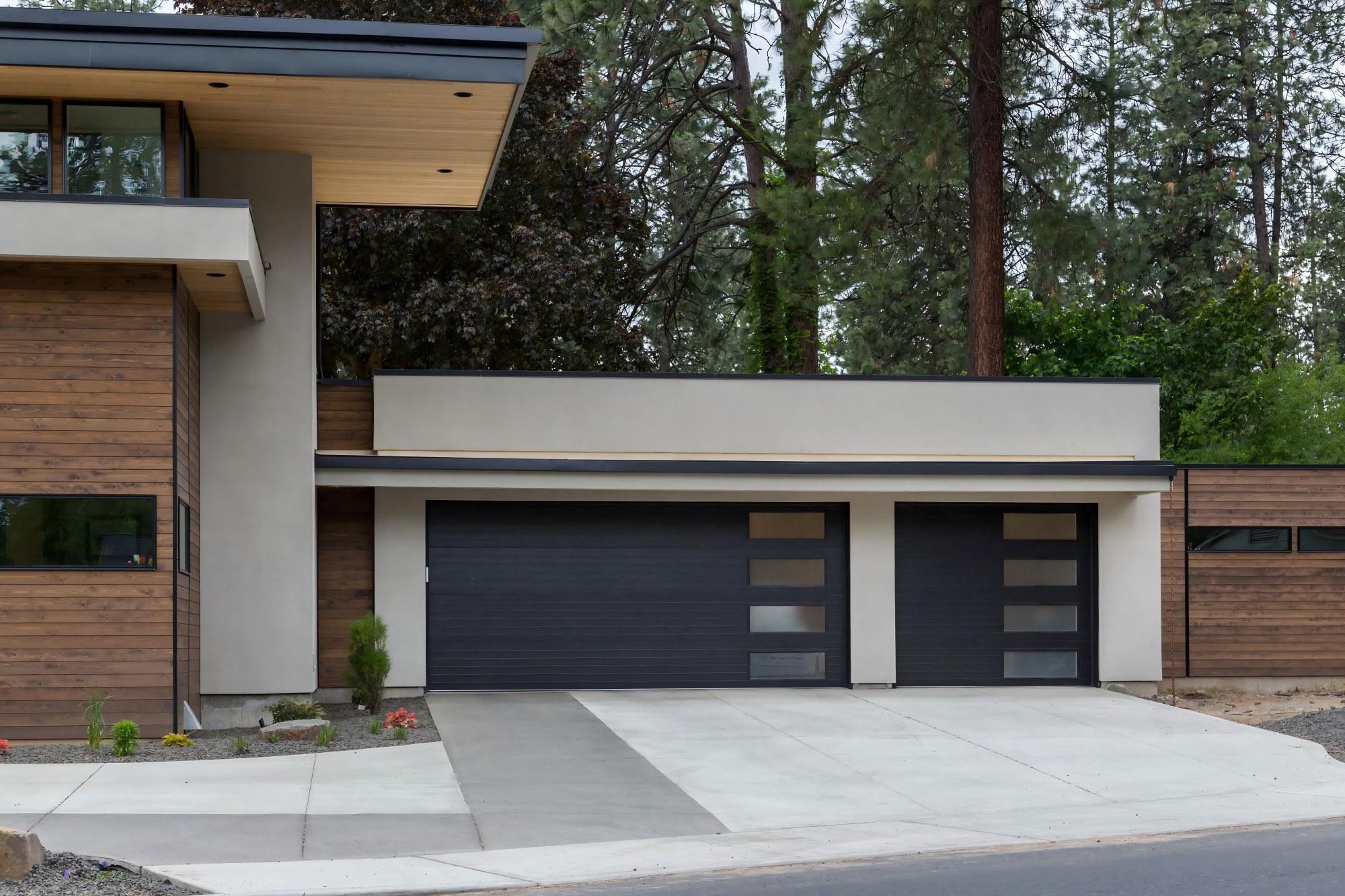
Popular Garage Door Styles
Choosing the right garage door style can greatly impact the look and feel of your home. A well-chosen garage door not only adds curb appeal but also complements your home’s architecture. Here, we’ll explore three of the most popular garage door styles: traditional, contemporary, and custom. Each style has its unique features, so let’s take a closer look at what they offer.
Traditional Garage Door
Traditional garage doors are classic, timeless, and often the go-to choice for many homeowners. These doors are typically designed with a more conventional look, with raised panels and symmetrical lines. They are often made from durable materials like steel, aluminum, or wood. Traditional garage doors have a versatile look that suits a variety of home styles, from classic suburban homes to older, more historic properties.
One of the key features of traditional garage doors is their raised panel design. The panels are usually rectangular and are either raised or recessed, giving the door a textured appearance. This style has been a popular choice for decades and is widely available in different finishes and materials, such as painted steel or wooden garage doors.
Traditional garage doors can be insulated for better energy efficiency, making them ideal for homes in colder climates. You can also choose a more decorative version, such as carriage-style garage doors, which mimic the look of old barn or stable doors but with modern functionality.
If you’re looking for a garage door that offers reliability, simplicity, and a look that will stand the test of time, a traditional garage door is a great option.
Contemporary Garage Door
Contemporary garage doors are sleek, minimalist, and modern in design. These doors are often made from materials like glass, aluminum, or fiberglass, and feature clean lines with less ornamentation compared to traditional garage doors. Contemporary garage doors can transform the look of a home, especially for those with modern or industrial-style architecture.
One of the standout features of contemporary garage doors is the use of large, clear glass panels. These doors often feature full-width windows that allow plenty of natural light into the garage. If privacy is a concern, frosted glass or opaque windows can be used instead. These doors give off a light, airy vibe and often blend well with steel or aluminum frames.
Another key element of contemporary garage doors is the emphasis on clean lines and simple geometric shapes. These doors are often flush or slightly textured, with no raised panels or complicated detailing. This style pairs well with modern homes, especially those with an open-concept floor plan or large, open windows.
If you want a garage door that gives your home a sleek, modern look, a contemporary garage door is the way to go. It’s a great choice for homeowners who want to make a statement and add a touch of sophistication to their property.
Custom Garage Door
For homeowners who want something truly unique, custom garage doors offer endless possibilities. With a custom garage door, you have the freedom to design a door that perfectly matches your home’s architectural style and your personal preferences. Whether you want a blend of materials or a one-of-a-kind design, custom garage doors allow you to get exactly what you envision.
The beauty of custom garage doors is that they can be tailored to any style, from traditional to contemporary, or even something entirely new. You can choose the material, color, finish, and panel design that works best for your home. Many custom garage doors combine different materials, such as wooden panels with steel frames, or glass inserts with aluminum panels, creating a unique, high-end look.
Beyond the design, custom garage doors can also be built with specific functional features. For instance, you can choose an insulated garage door for added energy efficiency or include smart technology for remote control and monitoring. Custom garage doors can be designed to fit a variety of opening sizes, from single-car garages to larger, double-width doors.
While custom garage doors tend to be more expensive than standard options, they offer the ultimate in personalization and can truly enhance the curb appeal and value of your home.
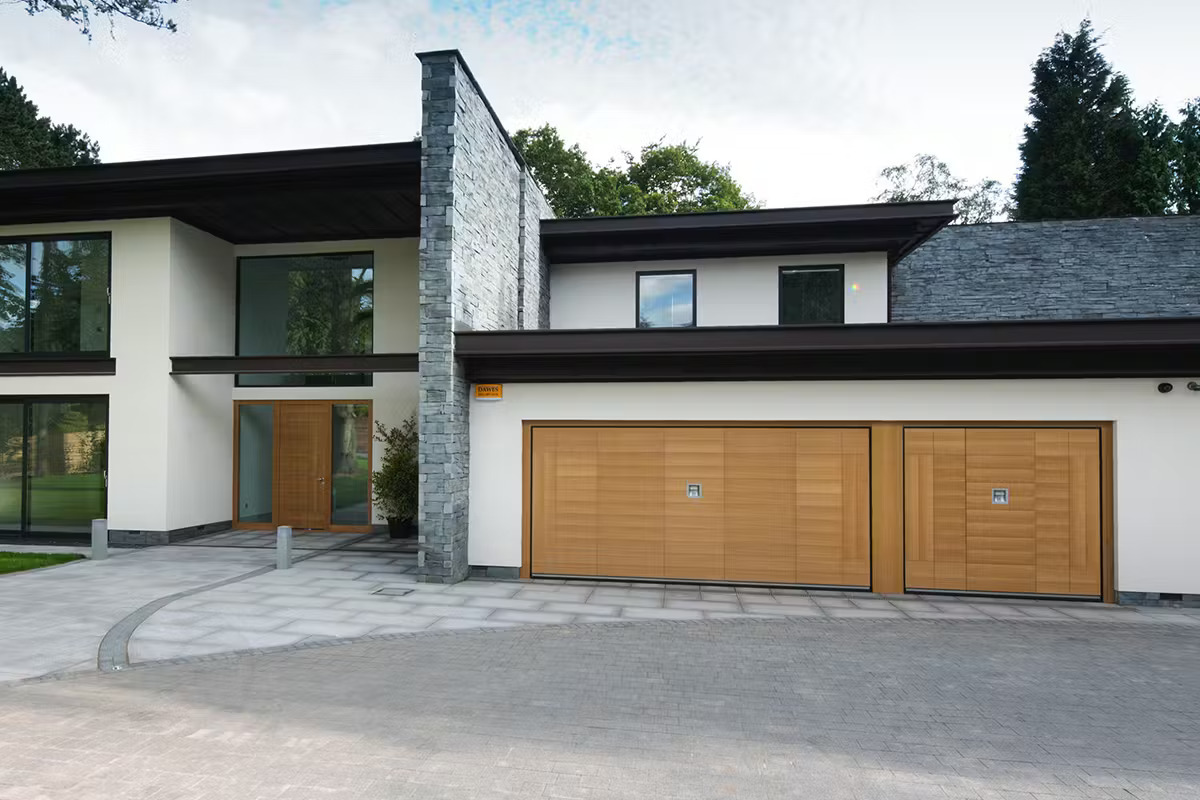
Garage Door Terminology in Different Regions
When it comes to garage doors, the terms we use can vary depending on where we are. Garage door terminology isn’t always universal. Whether you’re in the United States, the United Kingdom, or somewhere else, the words used to describe a garage door or its components can differ. Understanding these regional differences can help avoid confusion when buying, installing, or repairing a garage door.
How Garage Door Terminology Varies by Region?
Garage door terminology can change significantly depending on where you are. In the United States, terms like “garage door opener,” “overhead door,” or “roll-up door” are common. However, in the United Kingdom, the language used might differ. For example, in the UK, you might hear “up-and-over doors” instead of “overhead doors”.
In the US, the term “garage door opener” refers to the motorized device that opens and closes the door. It’s often associated with automatic doors. In contrast, in the UK, people might refer to it as a “garage door operator” or simply the “motor”. While both terms describe the same piece of equipment, regional preferences in language affect the way homeowners and industry professionals communicate about garage doors.
The materials used in garage doors also have slightly different terms based on the region. In the US, steel garage doors and wooden garage doors are common terms, but in the UK, you might hear people referring to timber garage doors when talking about wooden options.
Another key difference is how manual garage doors are referred to. In the UK, manual doors are often described as “side-hinged doors” or “swing doors” because of their opening mechanism. In contrast, in the US, the same type of door is usually just called a manual garage door or swing-out door.
Garage Door Terms in the US vs. the UK
The garage door industry in the United States and the United Kingdom has adopted slightly different terminology to describe similar products and functions. Here’s a breakdown of some of the key differences:
Garage Door vs. Carport Door:
In the US, a garage door typically refers to the large door that opens to a fully enclosed garage, whereas a carport door may be used in areas where the garage is open to the outside. In the UK, this distinction isn’t as common. Instead, people may refer to both as “garage doors,” regardless of whether the structure is fully enclosed or not.
Roll-Up Door vs. Roller Shutter:
Roll-up garage doors are a common term in the US, referring to doors that roll into a coil. In the UK, these are often called “roller shutter doors.” The function is the same, but the language used in each country is different. This term is often used for commercial applications, but can also apply to residential garage doors in both regions.
Overhead Garage Door vs. Up-and-Over Door:
In the US, an overhead garage door is any door that moves upward, either along tracks or via a rolling mechanism. In the UK, the same type of door is often called an “up-and-over door”. This term highlights the door’s movement – up and over the opening – which is common in many residential garage doors.
Regional Slang for Garage Door
In some regions, slang or informal terms are used to refer to garage doors, especially when speaking casually or in smaller communities. The US, you might hear people refer to their garage door opener as a “clicker”, especially when referring to the remote control. In parts of the UK, the same remote control might be casually called a “fob” or “clicker,” too, though this term is often used more widely in the context of car alarms.
Some southern regions of the US, people might call their garage door a “carriage door”, especially if it has a barn-style or rustic look. This is more of a regional term that emphasizes the style of the door, rather than its function.
In parts of Canada, you might hear a garage door referred to simply as a “bay door”, particularly in rural or industrial areas. The term comes from the way the door is often referred to as a “bay” in larger storage spaces.
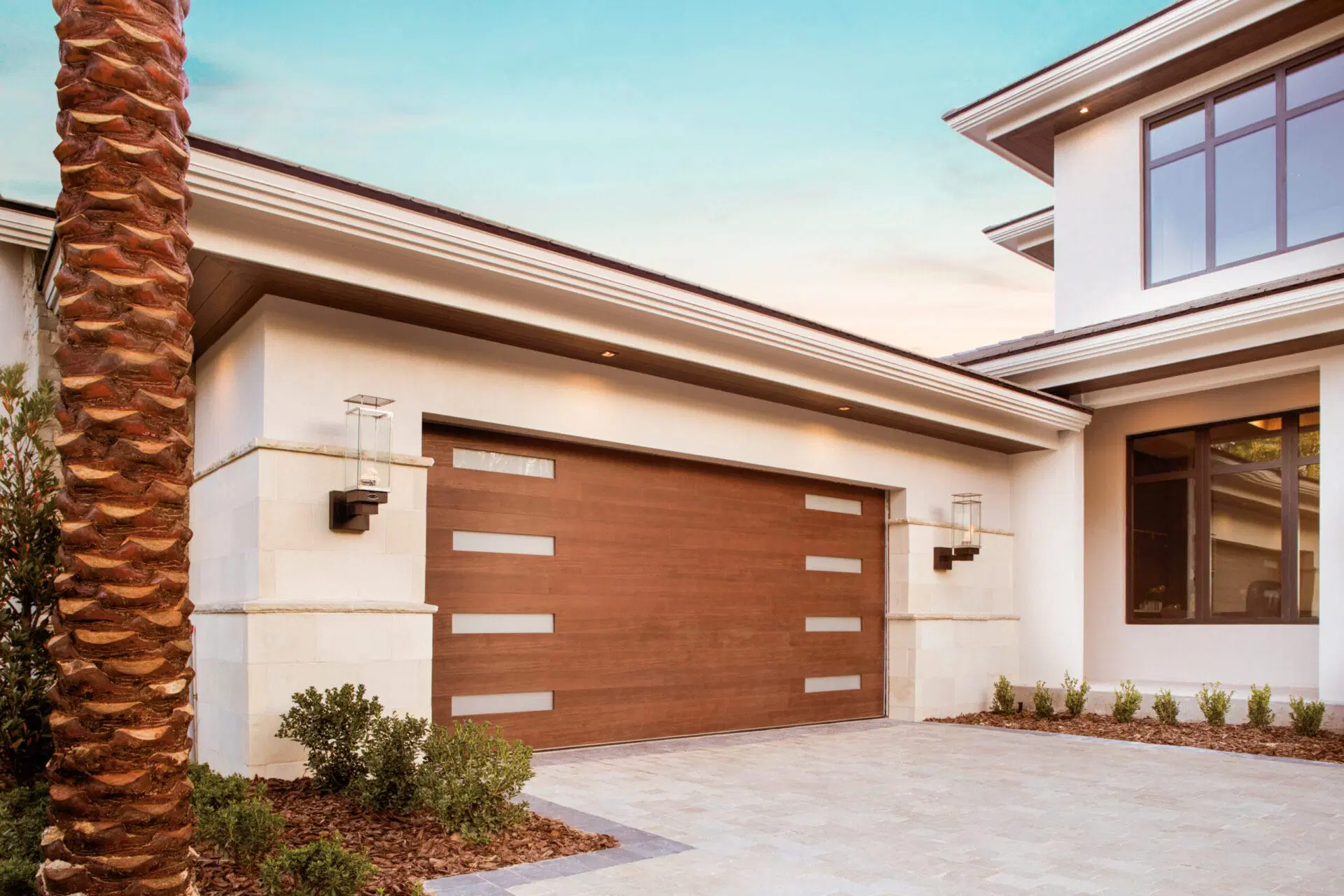
Relate FAQ
Is there a specific term for a garage door opener?
Yes, the device that automates the opening and closing of a garage door is called a garage door opener. There are several types, including chain-drive, belt-drive, and screw-drive openers, which vary based on the mechanism and noise level.
What are the panels of a garage door called?
The individual sections that make up a sectional garage door are referred to as panels. These panels are typically made of steel, wood, or composite materials and can vary in thickness and insulation.
Are there other names for garage doors in different countries?
Yes, in various regions, garage doors may be referred to by different names. For example, in some places, people refer to them simply as carriage doors or overhead doors.
What is the standard garage door size?
While there is no universal "standard" size, the most common dimensions for a single-car garage door are approximately 8 to 9 feet wide by 7 to 8 feet tall. Double-car garage doors are typically 16 feet wide and 7 to 8 feet tall.
Why are garage doors called overhead doors?
Garage doors are often referred to as overhead doors because, when opened, they are designed to move upward and be stored overhead, allowing the entire space in the garage to be accessible.
What is the purpose of garage door insulation?
Garage door insulation improves energy efficiency by reducing heat transfer, helping to maintain a consistent temperature inside the garage and your home. Insulated doors are also quieter and more durable.
What does it mean when a garage door is rated for wind resistance?
Garage doors with a wind resistance rating are designed to withstand high winds and storms. These doors are tested to meet specific wind load requirements and are often installed in areas prone to severe weather conditions.
